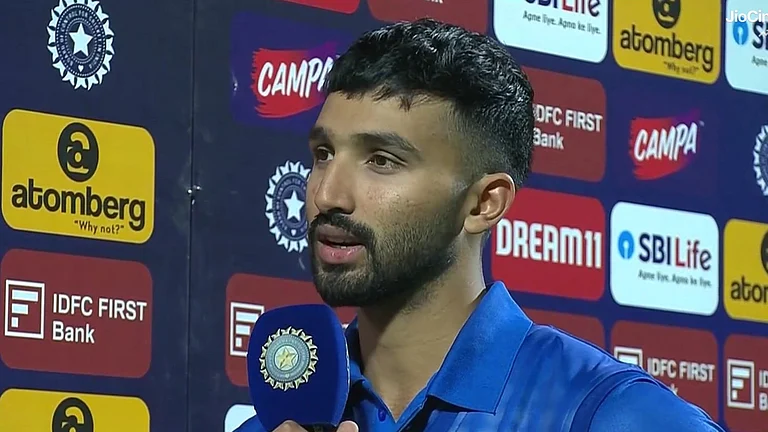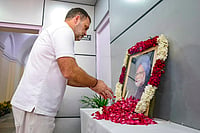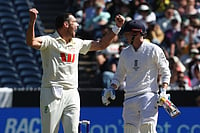For the starters in Indian industry, it's the chance of a lifetime. For the more seasoned, it's time to make hay. After all, it's not every year that the US president comes a-visiting. It's been over 20 years since President Carter came, and it may be 20 more years before the next. As a result, the mood in industry is: let's make the most of it.
When the visitor is Bill Clinton, arguably the most powerful man on Planet Earth, all the terms are dictated by Big Brother. Not surprising then that instead of the usual scramble by industry to buttonhole foreign dignitaries during state visits to press their side of the story, this time the chambers are still in the dark about their meetings. Says Amit Mitra, FICCI secretary-general: "We meet the president in Mumbai on the 24th but don't know where. Nor do we know the exact time of the meeting. The White House is making all the plans and keeping those to themselves; we'll be told in good time."
The White House sure has outplanned India Inc. Instead of a joint forum welcoming Clinton, industry will have to make do with piecemeal meetings-CII meets him in Hyderabad on March 23 and FICCI's darshan is slated for the next day in Mumbai. Regrettably for Delhi's industrial elite, Clinton's Capital visit will be restricted to politics.
The US is India's biggest trading partner with a $12.7-billion turnover in 1999-2000 and an astounding 34-per cent growth rate over the past five years. Also, the US is probably the only major country with which India has a favourable balance of trade. In 1999-2000, India's exports to the US exceeded $9 billion while imports were only worth $3.7 billion.
Yet, India remains an insignificant fraction of America's overall trade. While US exports to India account for 12 per cent of India's non-oil imports and the US is the destination of 18.9 per cent of Indian exports, the US trade turnover with India is less than one per cent of its global business. Industry expects the visit to cement bilateral ties and send the news across the world. Says a Delhi-based industrialist: "Those who shied away from India will start making a beeline here. You'll probably see a G-7 visit following the Clinton trip."
Given the global shift towards knowledge-based and green business areas in which India has a comparative advantage, industry is expecting more cooperation and funds flowing in infrastructure, financial services, energy and environment.
FICCI hopes to turn its meeting into a showcase of Indian success stories. CII, on the other hand, has lined up an impressive exposition showcasing India's capabilities in select knowledge-based areas, including infotech, energy, environment, pharmaceuticals, biotechnology and informatics. Says N. Srinivasan, CII senior director and coordinator of its activities during the visit: "We want to expose the touring CEO's to what industry has to offer. We'll have a ceo forum led by leaders like N.R. Narayana Murthy to convince America of what we can do. The Indo-US Industrial Cooperation Initiative will also be revived."
Says Ajay Khanna, another senior director with CII: "This will help us go global with our capabilities because you can't have a bigger endorsement than a five-day state visit by the US president. It will tell the world that we have come a long way from Pokhran." Agrees Tarun Das, director-general, CII: "The visit is significant. It will give a profile to India's market opportunities in the US. India would be on the radar screen of the world for full five days with the global media's attention focused here. It will change the perception that India is far and difficult to do business with. "
As to FICCI, it sees the visit as "a continuum of Indo-US economic ties. We feel that the rate of change in trade will accelerate and broaden into areas other than IT and traditional industries," says Mitra. Unlike CII, FICCI will have a special session with a 50-member delegation of CEO's and mandarins in Delhi to discuss business. One of the foremost issues on that charter is, interestingly, entertainment. Mitra feels that ever since entertainment was accorded industry status, nothing serious has been done. Clinton's visit could provide ample opportunity to concretise corporate plans in this sector. Says he: "Over 25 per cent of US exports is entertainment. Here, it's less than one per cent despite India being the largest producer of films and television software."
The US, it seems, is willing to oblige. Nine economic ministers and a huge media team will be part of the 2,000-strong entourage, plus some 200-odd CEO's from Fortune 500 companies. These include Boeing, Coke, DuPont, Ford Motors, General Electric, General Motors, IBM, BankAm, P&G, Xerox Corp, and financial sector giants like Merrill Lynch, Lehman Brothers, Morgan Stanley and the Chubb Corporation.
The US team has a pointed wishlist which aims at clearing hurdles for its industry. Very aptly titled "deliverables", this list was being circulated in India much before the visit-even before the Millennium Budget-to have the maximum impact during the visit. Some of the important items include reduction in excise duties on soft drinks, removal of embargo on import of soda ash from the US-it's the world's largest producer/exporter-and cut in tariff, according a duty-free status to photographic paper supplies from Kodak's plant in Nepal and lifting of the 'onerous' stock and licensing system followed by India on distributors of household insecticides.
India has its own wishlist too but limited to IT and, what else, politics. Says T.K. Bhaumik, US expert in CII: "We are still on the US watchlist under S-301, that's a constant source of irritation. There are other issues like anti-dumping and subsidies where India would like a better treatment from the American authorities. The issue of removal of Indian entities from the US trade list is yet another area." Then, for cyber nerds, India wants increased support to venture capitalism and raising of the H1B quota among a host of tech-related demands.
The US expects to clear a large number of commercial issues, especially in power and railways, involving US firms. Also on the agenda are state-level meetings on commerce and trade, energy and environment. Clinton's tour will be followed by finance minister Yashwant Sinha's visit to New York to launch roadshows on investment in India. Also on the cards are a string of seminars in Washington and the meeting of the Indo-US Joint Business Council.
Will the visit give Indo-US ties a new dimension? Industry is hopeful that trade will almost double to $20 billion in the next two years. Sums up Mitra: "Traditionally, our connection with the US has been one of aid only. But now the Cold War is over and focus has shifted from aid to market economy and expertise. If this visit turns out as expected, we might not have to wait for another 20 years for another presidential visit." All's well that ends well.





















